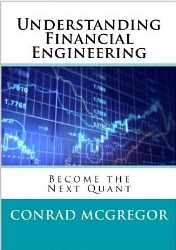Every few months I draw the spotlight on long-term US interest rates as they approach a long held barrier. Thirty year treasury yields have not been above 4.8% since the fall of 2007 but have tested the 4.7% level about 10 times since then. I consistently draw attention to long-term interest rates because they are intimately tied to housing affordability and the cost of servicing debt. The Federal Reserve can keep short-term interest rates low for prolonged periods of time, but they can only keep longer term interest rates suppressed for finite periods of time. In an economy burdened with debt, the level of interest rates are critical.
Interest rates have behaved the way that I predicted long ago, but now we are at a turning point. Is the rally real and can the economy actually sustain itself without government intervention? Those are the two questions that need to be answered in order to make a bet on equities or interest rates from here. If the growth does not materialize, expect choppy equity markets and range-bound interest rates. If a sovereign default or other large event risk pops up along with low to no growth, expect a retesting of the lows. If the government has ignited economic growth through low interest rates and stimulus, then we might just have a long way to go. For a hint on what might follow, I like to look at the steepness of the yield curve by comparing the 10 year treasury yield to the 2 year treasury yield. Since 1980, the steepness of the yield curve is at all-time highs:
When looking at the 10-2 spread, remember that the Fed controls the short end of the curve but has limited ability in moving the long end of the curve. When the yield curve is inverted or the spread is negative (shown in red above where 10 year yields are lower than 2 year yield) the market is saying that interest rates should be much lower than where the fed has them set which would imply less growth and less inflation going forward. When the yield curve is steep and the spread is highly positive as it is right now, the market is saying that the fed has short term rates way too low and there is going to be a larger proportion of inflation and growth (and now possibly sovereign default risk) than what short term rates are showing. I like to picture this as locking your front breaks while gunning the accelerator to spin your rear wheels; eventually you have to let go of the front breaks. Will I say that this spread dictates a high inflation rate in the next 4 months to come? No, but this signal has convinced me to increase my exposure to rising nominal prices and reduce my exposure to fixed interest rate bonds.





